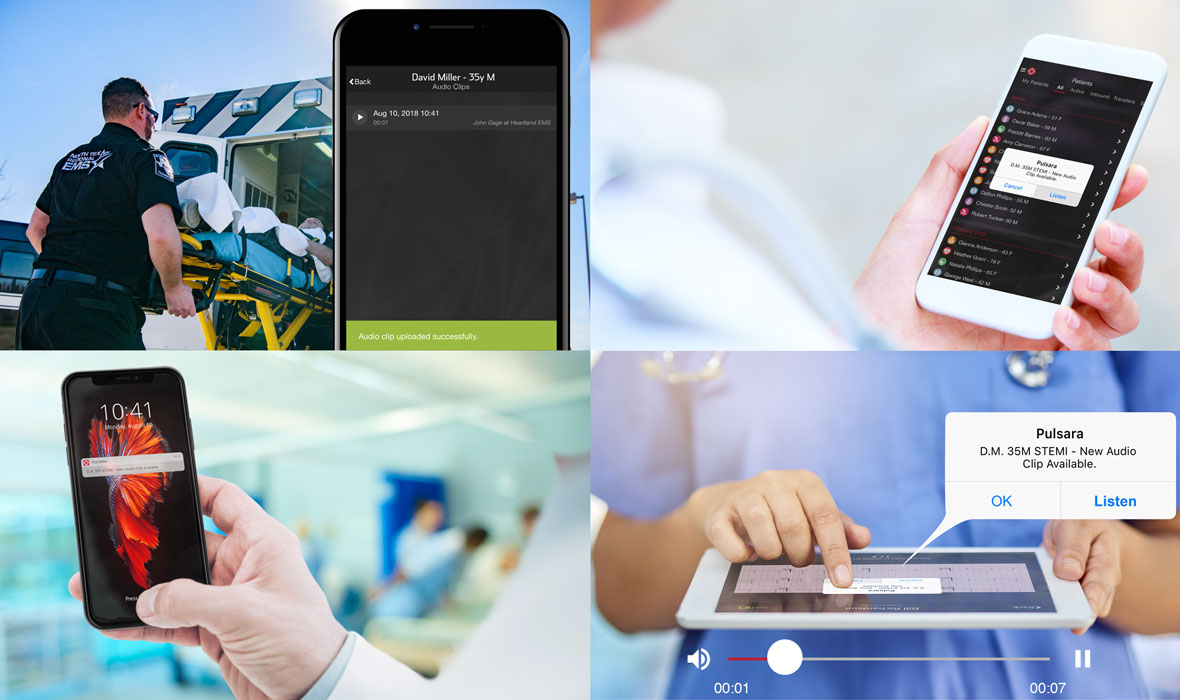Pulsara Around the World - 2025 Recap and January 2026
December Recap After an incredibly busy events year with 102 conferences, trade shows, and sponsorships, December was on the slower side for us, with...
2 min read
 Team Pulsara
:
Jan 31, 2019
Team Pulsara
:
Jan 31, 2019

EDITOR'S NOTE: Special thanks to Courtney Chumley, FACPE, for writing today's blog post. You can connect with her on LinkedIn.
Not too long ago in EMS, having computer-aided dispatch was only a daydream. We were lucky to even get a patient type back then. Remember when we were “dispatched” by picking up the phone at the station and being told there was a medical emergency at an address? This would sometimes be followed by a tip like “if you see a brown cow near a white picket fence, you should turn there.” No? Was that just those of us in rural Texas?
Fast forward to 2019, when there are national standards for emergency dispatchers to obtain information from the calling party and relay this information to the responding personnel. Now, not only do first responders get an address with a map, we get often get more details too: “42yr old male, chest pain, skin is cool and clammy, the patient was instructed to take Aspirin by the dispatcher, he is changing color. Patient was outside mowing his grass when the pain started 30 minutes ago.”First responders have become dependent on this additional information. If you’ve ever been dispatched to an “unknown complaint” and arrived on scene to have a small child who isn’t breathing handed to you, you understand just how necessary that communication is. It allows all of us as first responders to mentally prepare for what to expect, how to handle the patient, and to review treatments and procedures before we arrive on scene.
Just as this national communication standard for pre-hospital provider communication benefits our patients and our EMS teams, having a similar standard for communication with the ED is equally essential. Too often, when EMS calls a report in over the phone, we do not know who is receiving that report. Many times, that person is someone who will never actually care for the patient themselves. Combine that with the fact that they are trying to catch our report over a staticky, patchy radio transmission while also distracted by an overfilled ED, and then trying to relay the information to the next link in the care team, and it’s no wonder miscommunications in healthcare are so common.
But hospitals that get information from EMS in writing, all in one place, with a clear chief complaint, vital signs, acuity level, a picture of the STEMI or a stroke scale score, and all of which is shareable with the rest of the care team via a single tap are much better prepared to provide the best and most efficient care to our most critical patients.
With Pulsara, this scenario is a reality. Sending a 12-lead picture to the hospital with patient information transmitted in a HIPAA-compliant way turns a mystery into a verified emergency, allowing the ED to get everyone on the same page, and the right teams and resources to be mobilized — all before the patient even arrives at the hospital.
We as first responders have the ability to be the voice for our patients with the touch of a button. The voice that gets entire teams moving to expedite patient care and reduce errors in communication. It’s about people.

December Recap After an incredibly busy events year with 102 conferences, trade shows, and sponsorships, December was on the slower side for us, with...

Editor's Note: In July 2025, EMS1 and Fitch & Associates released their annual EMS trend survey, What Paramedics Want, proudly sponsored by Pulsara....
![[PRESS RELEASE] Published Research Finds Up to 31% Faster STEMI Treatment Times in Rural Hospital Setting with Pulsara](https://www.pulsara.com/hubfs/_1_website-page-blog-assets/pulsara-hosp-teams-assign-cardio-stemi-rn-1200x701.jpg)
Published research shows how using Pulsara, alongside standardized field activation and a focus on stakeholder relationships, improves STEMI care and...